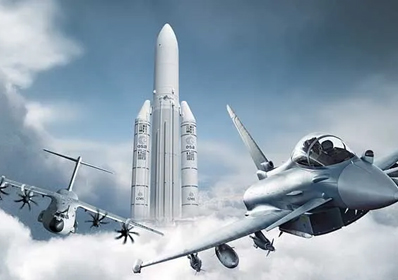Call Us
+971 55 414 2197
Free shipping for order over AED 999
We return money within 30 days
Friendly 24/7 customer support
Aerospace & Defense
The potential of 3D printing in aerospace & defense industry
Additive manufacturing provides a unique set of capabilities no other manufacturing technology can match.

- Distributed Manufacturing: Resilience to Long-Range Strikes: By employing clusters of 3D printers in decentralized manufacturing systems, companies can enhance their resilience against disruptions caused by long-range strikes or other centralized attacks. This distributed approach means that even if one facility is compromised, others can continue production independently.
- Adaptability to Changing Conditions: Additive manufacturing, such as 3D printing, is highly adaptable and can be quickly adjusted to respond to changing conditions. This flexibility is crucial in crisis scenarios where traditional supply chains may be disrupted or where there's an urgent need for specific, customized parts or products.
- 3D printing has proven to be a valuable tool in crisis response. For instance, during natural disasters or emergencies, when the conventional supply chain is disrupted, 3D printing can be used to produce essential items on-site. This helps in providing timely relief and support.
In summary, the decentralized nature of 3D printing and its adaptability make it a valuable technology for ensuring manufacturing resilience in the face of potential threats and for responding effectively to crises. This technology allows for a more distributed and agile approach to production, reducing the dependence on centralized facilities and traditional manufacturing processes.


